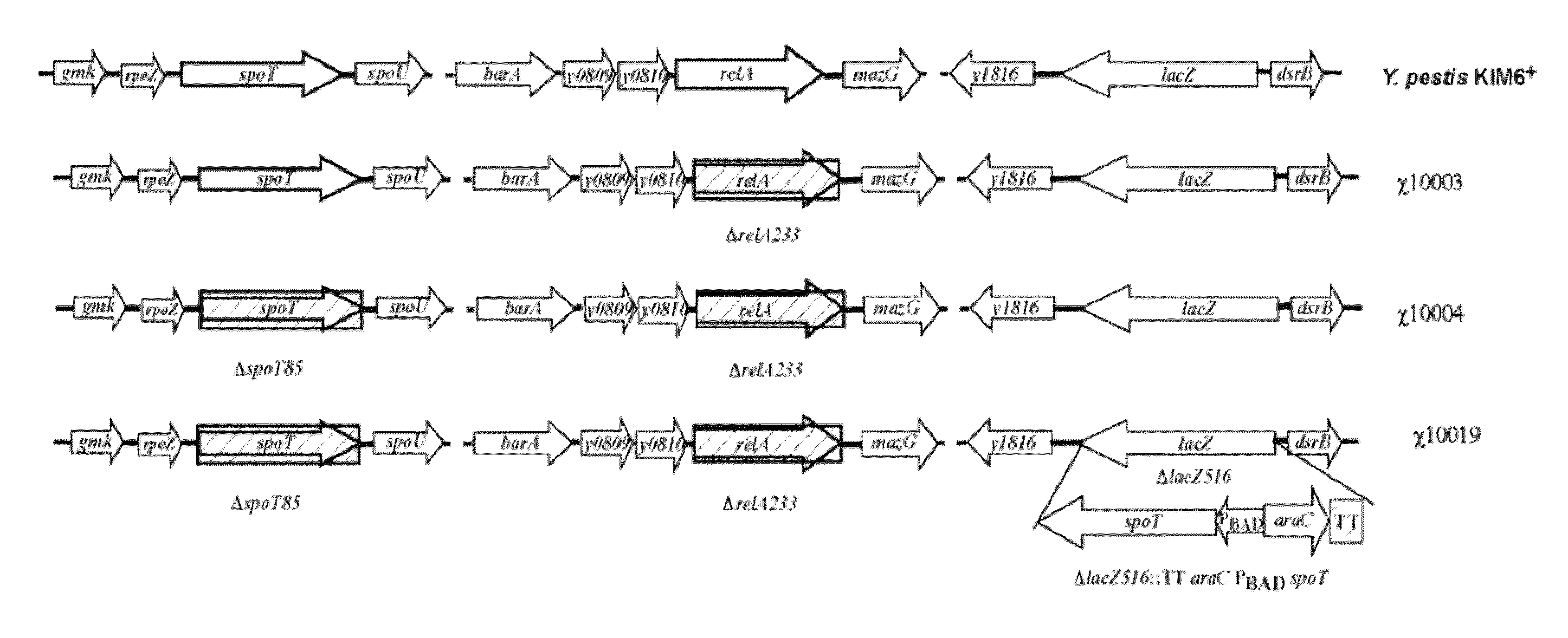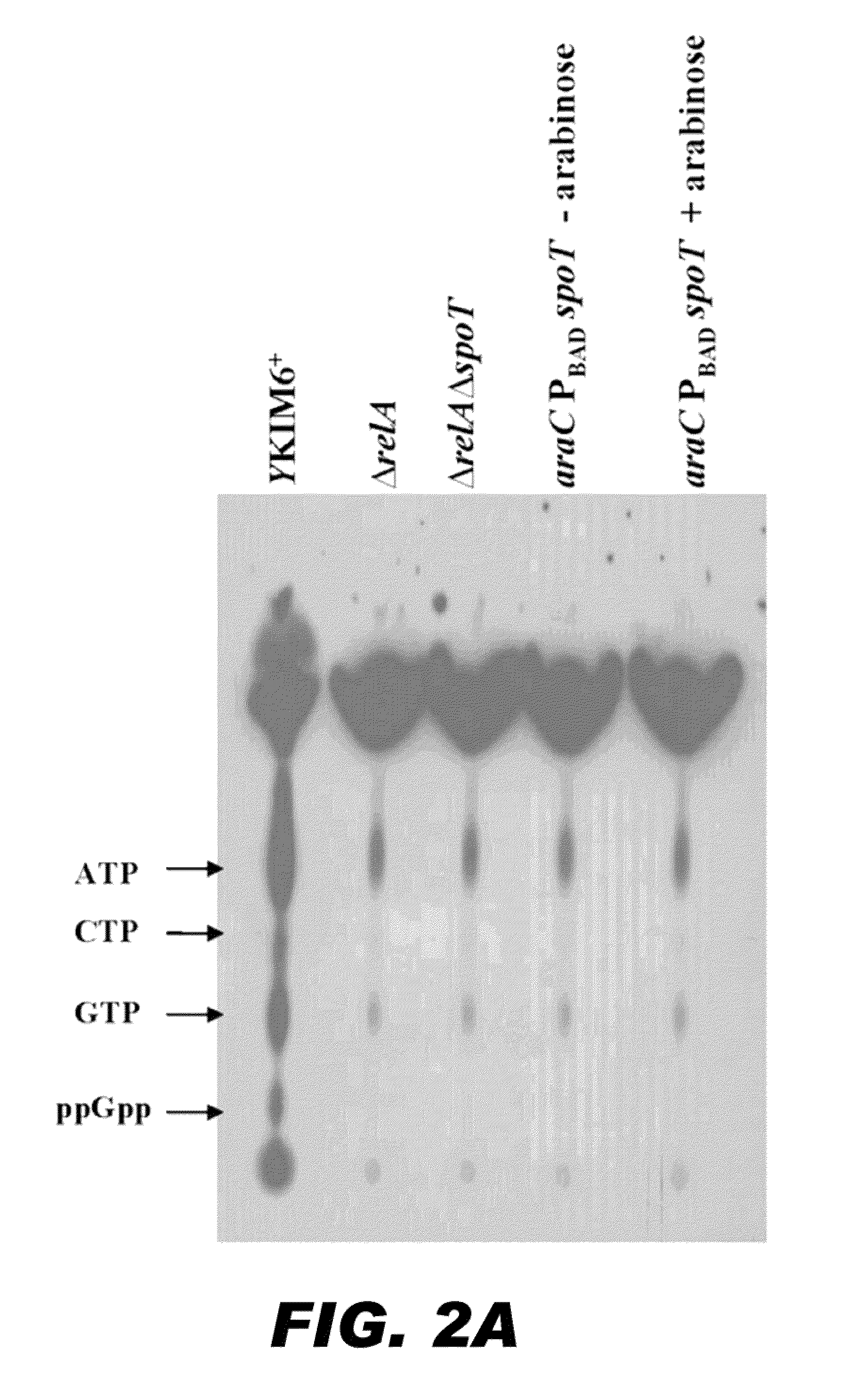Yersinia pestis vaccine
a technology of yersinia pestis and vaccine, which is applied in the field of recombinant yersinia bacterium, can solve the problems of high mortality rate and fatal diseas
- Summary
- Abstract
- Description
- Claims
- Application Information
AI Technical Summary
Benefits of technology
Problems solved by technology
Method used
Image
Examples
examples
[0119]The following examples illustrate various iterations of the invention.
examples 1-7
Introduction for Examples 1-7
[0120]The Examples below determine what role relA and spoT play in Y. pestis physiology and virulence by constructing ΔrelA and ΔrelA ΔspoT mutants and characterizing them for both in vitro and in vivo characteristics. We examined the effect of these mutations on transcription and protein levels at 26° C. (flea temperature) and at 37° C. (human temperature) and the effect on host colonization, immune responses and virulence. We also evaluated the double mutant for its capacity to induce protective immunity.
example 1
Sequence Analysis of the RelA and SpoT Genes
[0121]Analysis of the Y. pestis KIM5+ database revealed the presence of relA and spoT genes homologous to E. coli K-12 and S. Typhimurium LT-2 [15, 16, 17]. The Y. pestis RelA protein shares 84.7% identity with E. coli K-12 and 83.9% identity with S. Typhimurium LT-2 RelA proteins. The Y. pestis SpoT protein has 91.3% identity with E. coli K-12 and 91.8% identity with S. Typhimurium LT-2 SpoT proteins.
[0122]Our analysis indicated that Y. pestis SpoT, but not RelA, possesses the HD domain that is conserved in a superfamily of metal-dependent phosphohydrolases [18]. Histidine (H) and aspartate (D) residues in the HD domain are thought to be involved in (p)ppGpp degradation [18]. Both Y. pestis RelA and SpoT proteins possess the conserved ATP / GTP-binding and GTP binding domains, TGS [19] and ACT [20,21], respectively, that are present in the E. coli RelA and SpoT proteins [22]. The presence of these conserved motifs in the Y. pestis proteins ...
PUM
| Property | Measurement | Unit |
|---|---|---|
| temperature | aaaaa | aaaaa |
| pH | aaaaa | aaaaa |
| temperature | aaaaa | aaaaa |
Abstract
Description
Claims
Application Information
 Login to View More
Login to View More - R&D
- Intellectual Property
- Life Sciences
- Materials
- Tech Scout
- Unparalleled Data Quality
- Higher Quality Content
- 60% Fewer Hallucinations
Browse by: Latest US Patents, China's latest patents, Technical Efficacy Thesaurus, Application Domain, Technology Topic, Popular Technical Reports.
© 2025 PatSnap. All rights reserved.Legal|Privacy policy|Modern Slavery Act Transparency Statement|Sitemap|About US| Contact US: help@patsnap.com



